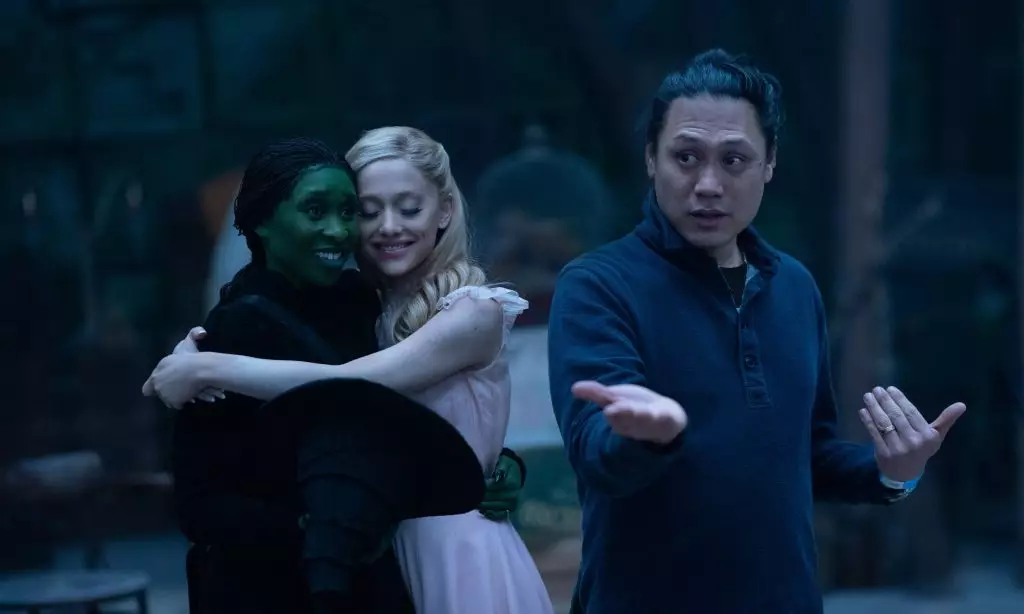The announcement of a new adaptation of Wicked, the beloved musical based on Gregory Maguire’s novel, was met with a mix of excitement and skepticism. As director Jon M. Chu prepared to bring the characters of Elphaba and Glinda to the screen, he understood that he was stepping into a cinematic landscape that has long been dominated by the technicolor magic of the 1939 classic, The Wizard of Oz. However, despite the high expectations, Chu chose to move in a different direction with the film’s visual aesthetic, opting for a more subdued color palette. This decision sparked a lively debate among fans, challenging preconceived notions of how Oz should be portrayed on film.
While some fans criticized the film’s “desaturated” look, Chu sought to clarify his vision. In an interview, he explained the rationale behind his artistic choices, emphasizing a desire to create a visceral experience for the audience. “If it was a fake place… then the real relationships and the stakes… wouldn’t feel real,” he stated, highlighting that his intention was to immerse viewers into a tangible version of Oz—one that feels lived-in and authentic. By incorporating a more natural color grading, his goal was to establish a backdrop where the characters’ emotional journeys can unfold without the distraction of an overtly fantastical environment.
Chu’s vision diverges significantly from the glossy visuals that have become synonymous with adaptations of classic tales. His aim was to portray Oz not as a sanitized utopia, but rather as a complex land influenced by the characters’ struggles. He noted the importance of elements like “dirt” and “wear and tear,” suggesting that a real-world connection enhances the depth of the narrative. This textured approach enables the audience to engage more deeply with the character arcs, cultivating a sense of empathy for Elphaba and Glinda as they navigate their intertwined destinies.
Critics of the film’s visuals took to social media, expressing their disappointment with what they saw as a failure to replicate the vibrant colors of the classic. Some labeled the film’s aesthetic as “drab” and criticized its unconventional use of lighting. Nevertheless, more optimistic fans defended Chu’s artistic direction, arguing that the film presents an innovative interpretation that goes beyond superficial visual appeal. In an age where digital manipulation often dulls the authenticity of cinematic landscapes, Chu’s commitment to physicality alongside digital elements sets a new standard for future adaptations.
Despite the varying opinions on its visual approach, Wicked has dominated the box office, proving that Chu’s vision resonates with a broad audience. The film achieved remarkable milestones, including the largest global and domestic opening for a movie based on a Broadway show. This success speaks to the enduring popularity of the Wicked narrative and the versatile talent of its stars, Ariana Grande and Cynthia Erivo. It’s clear that audiences are eager to see this reimagining, and much of that eagerness stems from Chu’s unique take on the story.
Furthermore, the film’s opening weekend performance surpassed expectations, marking the best pre-Thanksgiving box office in over a decade. This is a testament not only to the built-in fanbase of the original musical but also to the effective marketing and fresh perspective brought forth by Chu and his team. As they balance the dual responsibilities of honoring the source material while introducing novel elements, they present a challenge to traditional viewing habits.
As discussions continue about the film’s visual style, it raises broader questions about the future of musical adaptations. Will filmmakers embrace unconventional aesthetic choices in future productions? Jon M. Chu’s Wicked certainly sets a precedent, encouraging creators to prioritize emotional authenticity over visual nostalgia. It signifies a transformative moment in how beloved stories are told—prioritizing depth over tradition.
By leveraging both practical and virtual elements, Chu offers a distinctive portrayal of Oz that invites viewers into an authentic narrative grounded in character relationships and intricate world-building. The result is an adaptation that, in its essence, proves that innovation can be as powerful as nostalgia, propelling the beloved story of Wicked into new heights of artistic exploration. As audiences continue to engage with this new interpretation, it will undoubtedly leave a lasting impact on the landscape of musical cinema for years to come.

